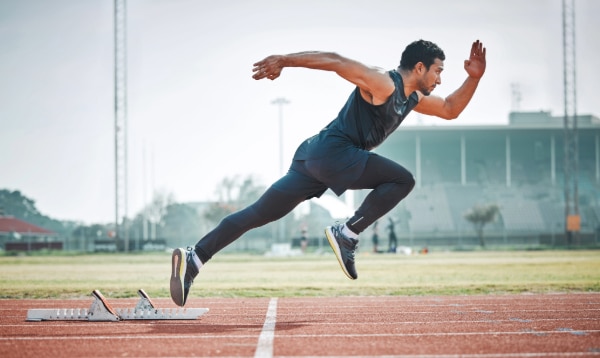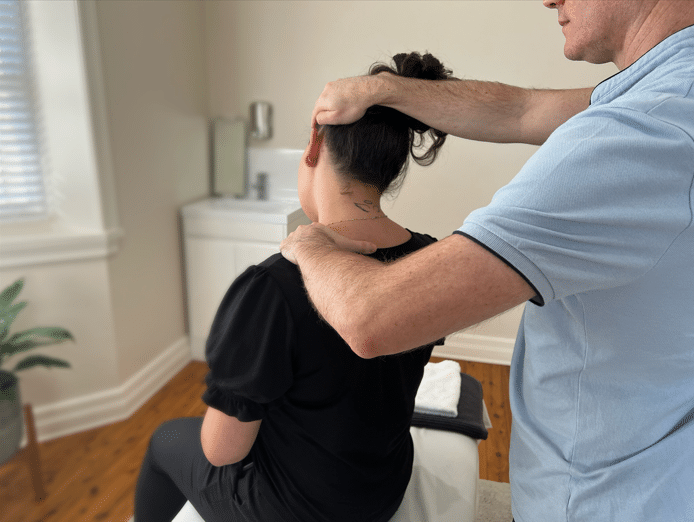- 02 9712 1736
- [email protected]
- 212 Great North Road, Five Dock, NSW 2046
- Open 7 days a week
Have you ever wondered how you can seamlessly reach for your coffee cup without even thinking about it? Or how a tennis player can instinctively return a serve at lightning speed? The answer lies in the remarkable partnership between your brain and body – a sophisticated network that orchestrates every movement you make, from the simplest blink to the most complex dance routine.

Imagine if your body parts were sized according to how much of your brain is dedicated to controlling them. You’d look quite strange! Your hands would be enormous, your lips and tongue massive, while your back and legs would be surprisingly small. This distorted image represents your brain’s “body map,” known scientifically as the cortical homunculus.
What’s fascinating is that this body map isn’t fixed – it’s constantly being updated based on how you use your body. Think of it like a dynamic real estate market where space is allocated based on demand. When you regularly move and use a body part, providing rich sensory input to your brain, that area maintains or even expands its territory in your brain’s map, so they get more “brain real estate”. However, when movement becomes limited – whether due to injury, sedentary lifestyle, or restricted joint mobility – the sensory input decreases, and that body part’s “real estate” in the brain gradually shrinks. This reduction in brain representation can lead to decreased movement control and coordination in that area.

Movement begins as an electrical signal in your brain’s motor cortex. This signal travels down specialized nerve cells called motor neurons, passing through your brainstem and spinal cord before reaching your muscles. Think of it like a complex postal system, where each message (nerve signal) has a specific destination (muscle) and carries precise instructions about what that muscle should do.
This process happens incredibly fast – nerve signals can travel up to 268 miles per hour! This speed is crucial for both planned movements (like reaching for a glass) and reactive movements (like catching yourself when you trip).

Movement isn’t just about sending commands from brain to muscles – it’s a two-way conversation. Your body constantly sends information back to your brain about position, pressure, stretch, and balance. This system, called proprioception, is like your body’s GPS.
Close your eyes and touch your nose. How did you do it? Proprioception allowed your brain to know where your finger and nose were in space, even without visual input. This constant feedback helps your brain adjust movements in real-time, ensuring smooth, coordinated actions.
Every time you learn a new movement – whether it’s a yoga pose or a golf swing – your brain physically changes. This is neuroplasticity in action. The neural pathways involved in that movement become stronger, like turning a dirt track into a paved highway through repeated use.
This is why practice is so crucial for learning new skills, and why movements become more automatic over time. A beginner pianist must think about each finger movement, while an experienced pianist can play complex pieces without conscious thought about individual notes.
Unfortunately, our modern lifestyle often works against this beautiful system. Extended periods of sitting can lead to what we call “deconditioning” – where both neural pathways and physical structures become less efficient. It’s like letting a well-maintained road deteriorate from lack of use.
This deconditioning can manifest as:

Chiropractic care plays a crucial role in maintaining and improving this neural-physical partnership. Through specific adjustments and exercises, chiropractors can help improve movement in two key ways:
First, chiropractic care directly addresses physical restrictions that limit movement. Through targeted manipulation and mobilization techniques, chiropractors can help release tight muscles and restore proper joint mobility. This is like removing physical roadblocks that have been preventing normal movement.
Second, these adjustment techniques provide powerful sensory input to the brain. When a chiropractor performs joint manipulation or mobilization, it stimulates specialized receptors deep within your joints. These receptors send a massive package of sensory information to your brain, essentially “reminding” it that movement should be possible in that area. This increased sensory input helps maintain or restore that body part’s representation in your brain’s body map, leading to better movement control.

Regular chiropractic care can help:
If you’re experiencing movement-related issues or want to maintain optimal function, professional care can make a significant difference. For residents in the Inner West Sydney area, the experienced team at Five Dock Osteopathic and Chiropractic Centre is here to help.
Our chiropractors understand the complex relationship between your nervous system and movement, and can develop a personalized care plan to address your specific needs. Whether you’re dealing with the effects of a sedentary lifestyle, recovering from injury, or simply want to optimize your movement patterns, we’re here to support you.
Don’t wait until small issues become bigger problems. Book an appointment today at Five Dock Osteopathic and Chiropractic Centre and take the first step toward better movement and improved wellbeing.
Forest Lodge, Annandale, Glebe, Leichhardt, Balmain, Haberfield, Canada Bay, Rozelle, Rodd Point, Wareemba, Stanmore, Petersham, Lilyfield, Hunters Hill, Enfield, Cabarita, Mortlake, Rhodes, Burwood Heights, Birchgrove, Gladesville, Huntleys Point, Abbotsford, Ashfield, Croydon Park, Croydon, Chiswick, Russell Lea, Burwood, Strathfield, Concord, Drummoyne, North Strathfield, Liberty Grove, Dulwich Hill, Lewisham, Camperdown, Ashbury, Homebush, Homebush West, Woolwich, Henley, Summer Hill, Sydney Olympic Park

About
Five Dock Osteopathic & Chiropractic is located in Canada Bay, in Sydney’s Inner West. Servicing suburbs including Burwood, Croydon, Drummoyne, Five Dock, Haberfield, Concord, Abbotsford, Chiswick, Leichhardt, Wareemba, Russell Lea, Summer Hill, Strathfield.
Clinic hours
Monday, Tuesday, Thursday 7AM – 7PM
Wednesday, Friday 7AM – 6PM
Saturday 7AM – 2PM
Sunday 8AM – 2PM
Contact details